

Multiple brands of dual extruder 3D printers are out there. Choosing the right one is not an easy task. What makes the process even complicated is that they’re all different. Therefore, not all high-rated printers are as good as the praises they get. You must figure out which is best for you. We’ve narrowed the list to help you make quick decisions and pick the best dual extruder 3D printer.
We have chosen eight options paying attention to several crucial elements. All of the printers in our review produce high-quality prints, are sturdy, and easy to use. We considered dimensions, weight, printing technology, build volume, layer resolution, positioning precision, and compatibility. For instance, the build volume will determine the size of the object you print while the layer resolution will affect the texture of your final product. Check our buying guide after the reviews for more information on features.
More features: free email support; metal platform; no assembly required; LED light illumination; LCD screen; injected PC top cover
Are you looking for a dual extruder printer with the shortest learning curve? Then look no further than the FlashForge 3D Printer Creator Pro. It boasts a strong metal frame with a metal platform support and a 10mm guide rod for accurate Z-axis movement. The heating process of the machine is smooth and convenient, thanks to its flat surface.
The chamber is enclosed in a new acrylic cover for insulation and preventing the ABS prints. The injected PC top cover is in one solid piece and very strong. Compatible software includes ReplicatorG, FlashPrint, and Simplify3D. While ReplicatorG and FlashPrint come with the printer, you must buy Simplify3D separately if you’d need it. However, you’d need simplify 3D if you want the best from the printer.
What we liked: It’s a reliable printer and beginner-friendly. Setting it up is quick, and using is flawless. However, you must be patient when you try dual extruding. You can use two different filaments without experiencing any problems. Note that the first thing to do is printing the filament and spool feeders. Once you’re ready with the two, everything else works like a charm.
What could be better: The printer is loud, and you can hear it run while in another room. Besides, the nozzles seem not to be on the same height. Also, you’ll need to replace the nozzles sooner. The table is relatively small, and balancing it could take you some time. Finally, the cooling system could be better too.
More features: one-year limited warranty; increased torque performance; filament sensor; HEPA filter; intuitive user experience
Raise 3D Pro is a high performer printer with diverse filament compatibility. It’s truly a superb and stable printer and does what it should. The machine is capable of working for 60 hours straight without errors. It’s efficient and produces top-quality projects. If you’re looking for a cheap piece, then this is not your thing.
You can create whatever you want – it’s full of features with excellent software support. What’s more, you don’t have to worry during a power outage and freak out because your project was halfway done. A 7” touch screen with a resume print option will help you resume your work. The printer uses a 32-bit motion control board, and you can print material up to 310-degree Celsius.
What we liked: The printer is silent in the background regardless of the amount of work. It supports days of printing without jam issues. Its print quality is excellent. You just have to follow the step by step guide when unpacking the printer. While instructions are straightforward, this machine is advanced and not welcoming for beginners. However, patience won’t hurt.
What could be better: The BuildTalk surface can be frustrating. It occasionally loses adhesion and messes with your flat surface. You might want to look for an alternative such as the PEI. Besides, pay close attention to the nozzle switch mechanism because it creates a long filament path and can get shredded during an atomic pull.
More features: an enclosed chamber for protection; self-developed software FlashPrint; manufacturer’s warranty; built-in memory
Flashforge Dreamer 3d Printer boasts a modern, sleek design and doesn’t disappoint on performance. It features a built-in SD port, a high-resolution 3.5” color touchscreen, Wi-Fi connectivity, and encloses in full body. If you’re interested in a printer with the latest printing technology yet affordable, look no further than the Flashforge dreamer.
And still, the printer comes with a USB cable, 4GB SD card, two spools of filament (both ABS and PLA), and tool kits. It’s compatible with ABS, PLA, and PVA software. The size build volume is perfect for the price of the unit, not to mention 100 microns and maybe 75 microns if the speed is low. Bed leveling is not automatic but very straightforward.
What we liked: The quality is satisfactory. Using the machine is very easy, and it’s possible to use different types of filaments with it. Its original software is an excellent slicer and does a commendable job. What’s more, the cooling system, wireless connection, and USB port printing work seamlessly. Dual extruder functions perfectly, making it the best dual extruder enclosed home 3D printer.
What could be better: The spool size and location are not the best. You might want to use an external spool holder for convenience and better results. Although the printer’s frame looks okay, we feel plastic lowers the quality of the unit and might fall short.
More features: LCD touch screen; three print modes; multi printing material available; 3-month warranty for extruder; 1-year warranty for the main parts; lifelong tech support
HICTOP Tenlog D3 pro 3D Printer is an excellent machine for anyone looking to improve their work efficiency. It is perfect for steady small batch production. Putting the device together is a breeze – you only need a maximum of ten minutes. Moreover, the print does not take up much space, and it’s ideal for home use.
The printer supports several filaments, including PVA, PLA, TPU, ABS, Wood, among others. If you love mirror print, then the same feature of this printer might excite you. The best of it all is that you can print dual colors at the same time. The double Z-axis design ensures precision and also prevents material contamination.
What we liked: The print is small but mighty – smooth movements and no vibrations. It’s a versatile machine, and you’ll never run out of options. Printing two models with distinct colors simultaneously is exciting. You could either leverage on the mirror, duplicate, or two-color printing model. Also, multiple printing materials are at your disposal. Lastly, the manufacturer offers a lifetime tech support, which is encouraging.
What could be better: A heated bed takes quite some time to heat up. Besides, the printer lacks an auto-level bed sensor though that’s not a big deal. Also, note the machine has some adhesion issues, and you might want to order an ultra-base to use.
More features: full-color touch screen; filament detection; Wi-Fi control; copy printing; friendly customer support
Are you looking for a printer that you’ll never lack support from its manufacturer regardless of when you’d need it? BIBO has the best support staff you’d ever want – very responsive whenever you need help. That said, the machine features outstanding elements, including a full-color touchscreen with no threshold, Wi-Fi, and filament detection.
Furthermore, you could still resume your project after a power outage and not having to start from scratch. The machine is capable of printing two identical projects simultaneously. Also, you could print two-color objects with the same filament. What’s more, it’s straightforward to print in a different filament type and color hence easy to remove them. When it comes to the printer’s construction, it features a sturdy frame and encloses it in a removable cover.
What we liked: BIBO support staff is exemplary, and you’ll never regret choosing them over others. The machine setup process is quick. Instructions are easy to follow, and the SD card that comes with it has helpful information. Simplify3D and Cura slicers come with the unit. The prints come off perfect and crisp. You’ll be happy to know that the nozzles come set at the right height so that you don’t have to figure out what to do.
What could be better: There’s nothing much to regret about it. However, you might want to stay away from the BIBO 3D printer if you’re a beginner.
More features: durable; high-temperature resistant platform; one-year warranty; touch screen
QIDI TECH 3D Printer is probably one of the best dual extruder 3D printers with high precision. It has a maximum nozzle temperature of 250-degree Celsius. 4.3” touchscreen with a user-friendly interface allows easy and precise operation. QIDI comes with a special slicing software that’s easy to use and provides auto slice function. However, the machine is also compatible with third-party software such as Simplify3D.
Similarly, it is compatible with PETG, PLA, TPU, ABS, and prints two colors. It’s possible to heat its aviation-grade aluminum plate to 110-degree Celsius. Again, QIDI is a great machine and can print objects with multiple colors or use different filaments. It’s useful for small and large projects and requires minimal maintenance.
What we liked: The printer has a removable plate that’s practical. Its curved metal plate is reusable, and offsets to the build plate are minimal. We also like the power breaking function whereby the printer will automatically resume your project in case of a power outage. Generally, the hardware is excellent, and their customer service is reliable.
What could be better: We think the manufacturer needs to improve the firmware. Besides, it’s unclear how to get more base plates if you needed some. A glass base plate could do better than the bendy one. Finally, we didn’t like the idea of having the spools on the back of the printer, though that’s not a big deal.
More features: easy to assemble; mix-color printing; printing-resuming; large printing area; customer support
Are you interested in a dependable printer that’s easy to set up and use? Then look no further than the GIANTARM-GEEETECH A10M. It features a mix-color printing function making it possible to experiment on several designs. Also, its break-resuming capability allows you to pause your project and attend to other matters or when there’s a power outage. The feature is also ideal when you want to switch between filaments.
Its design is unique with v-shaped rails and wheels to reduce noise and boost efficiency during printing. Another commendable feature is its adoption of the open-source control board that enhances quality. A filament sensor is available for your convenience and precision. The printer is also beginner-friendly, and we’d recommend it for newbies to try out.
What we liked: It’s super easy to get started with it. The machine mixes the colors perfectly and prints fast. The auto-leveling function is a plus, although the printer doesn’t come with the auto-leveling sensor. However, leveling is straightforward and doesn’t consume time. Instructions are easy to follow, and if something is unclear, you can leverage on their forum platform for help. Customer support is excellent and reliable too.
What could be better: The filament sensor can misbehave at times, showing no filament when that’s not the case. You must do proper tuning if you want quality prints meaning you’ll have to spend time online to get the appropriate settings.
More features: enclosed printing chamber; LED touch screen interface; reliable performance; metal frame
If you’ve been looking for the best high-resolution dual extruder 3D printer, then your hunt ends here. FlashForge Creator Max features a metal frame and chassis with a maximum temperature of 240 degrees Celsius. The metal frame boosts stability and eliminates the printer’s movements. Leveling knobs are available for more manageable and precise leveling.
The printer comes assembled and ready to use – you only need to fasten the top cover onto the printer. It’s stylish and user friending, making handling very easy. It includes external handles, an LCD interface, a unibody to cover, and a 180-degree opening front panel. Filament compatibility includes ABS, PLA, PETG, PLA color change, PC, ABS Pro, Elastic, ultra-strong PLA, wood, Metal filled, Flexible, high-speed PLA, among others.
What we liked: The machine is exciting and user friendly. Customer support is excellent, which is a plus. Open-source software-enabled increases diversification and more slicing possibilities. You could use Cura, Simplify3D, and more slicing software. The printer’s dual extruder technology works pretty well. And still, the FlashPrint software is straightforward to use, and the print quality is top-notch.
What could be better: You need to do a lot of digging for user information apart from available videos. It’s challenging to do upgrades because of the lack of necessary info. Replacing a nozzle is a tough job. One has to disassemble the print head and be vigilant when reassembling to balance the block to achieve the precise level of the two heads. That’s a lot of work, especially when info is not readily available.
Dual extruder 3D printers are built differently. You will, therefore, want to choose one that best fits your needs. The market is full of different models, and the noise about them is too much. It’s easy to get lost in between if you’ve no idea how to shop for one. Our buying guide will help you focus on what matters and, as a result, make a sound decision.
Dual extruder 3d printers have numerous benefits. Below are the main advantages to expect when you decide to use one.
The best dual extruder 3D printer is one that fulfills your immediate needs in the most convenient way. This explains why different people prefer different models. However, several factors are essential, and the only way to get what you want is by looking into them. Be sure to define the following elements according to your needs before making a final decision: dimensions, weight, printing technology, build volume, layer resolution, position precision, and compatibility. Some of them are quite technical and calls for patience. Check our recommendation below for each feature and why they’re critical.
The first thing you want to consider is the dimensions. It’s essential to be clear about the size of the printer before getting one. What’s critical here is your working space and storage. Buying a massive printer while your working space is limited is impractical. You must also not forget about storage. Be sure the size of your storage area will accommodate your printer.
Start by getting the measurements of both your working area and storage unit (if any). Compare them with those of your dream printer to see whether they fit.
While weight is not a subtle element to consider, many people seem to overlook it. Put weight into account if your printing projects require you to move from place to place. You want a printer that’s not only excellent in what it does but also portable. However, you don’t have to be on the go for you to think twice about the weight. It’s always a good idea to purchase a convenient printer. Some models, such as QIDI TECH 3D Printer and BIBO 3D Printer, are pretty heavy and will require a lot of effort. Anything beyond 30lbs. is no joke. Note that most printers are between 20 and 25lbs., and still will demand dedication if you were to move around with them. However, do not allow weight to prevent you from considering other features or stop you from buying a printer.
Printing technology is a crucial element to consider before buying a 3D printing machine. Several methods of 3D printing, such as SLA, DLP, FDM, and others, exist. However, Fused deposition modeling (FDM), also known as Fused filament fabrication (FFF), is the widely used technology. It’s famous because its devices (material extrusion) are readily available and inexpensive. Again, multiple materials such as PLA, ABS, and PET are known for their use. Also, FDM offers an excellent surface finish and full color. What’s more, FDM technology is useful for general-purpose parts. We gave FDM printers much attention due to their popularity and availability. However, you might want to look around if you have specific needs, or they don’t fit your preferences. Note that some manufacturers do not specify printing technology. Phone them and find out before you purchase – unless anything goes for you.
Build volume is an equally vital factor to consider in any dual extruder 3D printer. It directly affects the size of the object you intend to print. In other words, it’s the largest size a 3D printer can create. Why should you consider the build volume, anyway? It’s because you want to ensure your most extensive parts will fit so that you minimize the need to print them in small pieces then glue together. Altogether, the nature of your projects should lead when it comes to deciding to build volume. An Architecture will require a printer with a large build volume than someone who deals with jewels.
Ask around for recommendations if you do not know the best build volume for your projects. Note that printers with large build volumes cost more. Again, printers on our list have typical build volumes, and you might want to keep looking if you have special needs.
Layer resolution is a factor that many people rarely understand. Seek professional advice when at the crossroads. The layer resolution that you choose will determine how the surface of your final print will appear. If you’re looking to produce objects with smooth surfaces, then you need low layer height. More number of layers are required to complete a model with a soft layer height. The smoother the surface, the longer it takes to complete. It’s now a matter of speed and quality – and unfortunately, you can’t achieve both. As we mentioned before, the concept of layer resolution is complex and needs the patience to understand it. You might go through several trial and error sessions to understand what works best for you. Do not hesitate to seek clarification when stuck. That said, the Raise 3D Pro2 3D Printer has the lowest layer resolution on our list and could be ideal for those more good prints.
How many times would you want to hit the right target? Getting a dual extruder 3D printer that will allow you to be consistent as many times as possible should be your goal. The position precision of a printer relies on its x, y, and z axes. Notably, one or two of the axes are movable.
Since 3D printing is a process that requires adding layer by layer to complete parts, position precision is critical for accuracy.
Compatibility is the last but not the least element to put into account. 3D printing uses special software, and the software must be run on a computer somewhere. Unless you’re ready to purchase random computers after you get your printer, you must pay attention to the operating systems that it’s compatible with. The most widely used operating systems include Windows, Mac, and Linux. However, some printers allow you to use your smartphone, but that can’t be reliable. It’s important to note that the version of operating systems could also be a thing with some printers. All in all, be sure to confirm before purchasing. You might want to check out FlashForge 3D Printer Creator Pro that’s compatible with all the major operating systems.
Dual extruder 3D printers are reliable and efficient than the single ones. They’re versatile and unlock many possibilities in the 3D printing industry. Also, they print fast and produce high-quality prints. If you want a specific printer to use, then we recommend FlashForge 3D Printer Creator Pro, our editor’s choice. It’s also sturdy, reliable, and produces high-quality prints. If you’re interested in a high-performance printer, then look no further than our premium pick, Raise 3D Pro2 3D Printer. It guarantees days of high-quality prints. What’s more, it’s sturdy and silent. BIBO 3D Printer, on the other hand, is our best value pick. It’s easy to set up, produces high-quality prints, and has the best customer support. We believe you’re now well equipped with enough knowledge and can make informed decisions. It’s time you improve your flexibility and productivity with one of the best dual extruder 3D printers on our list.
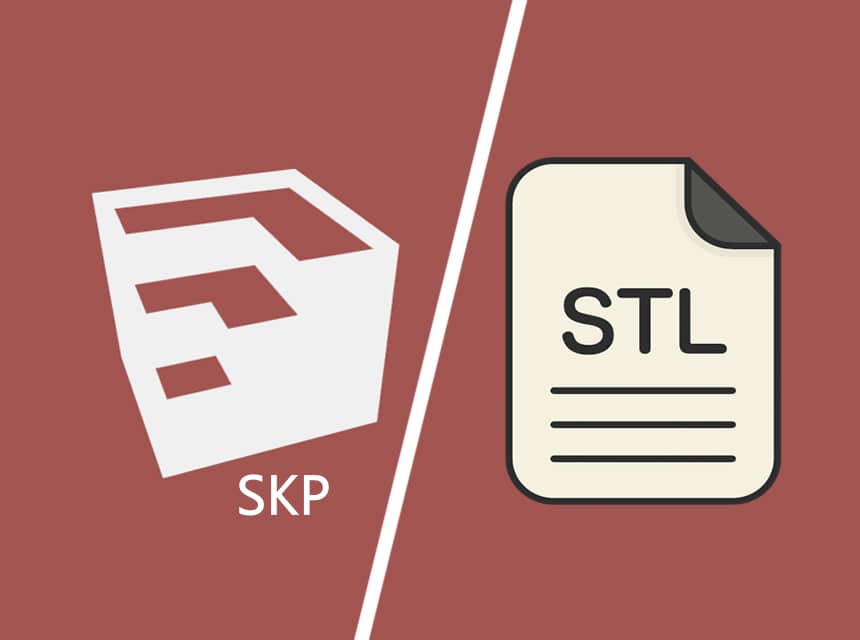
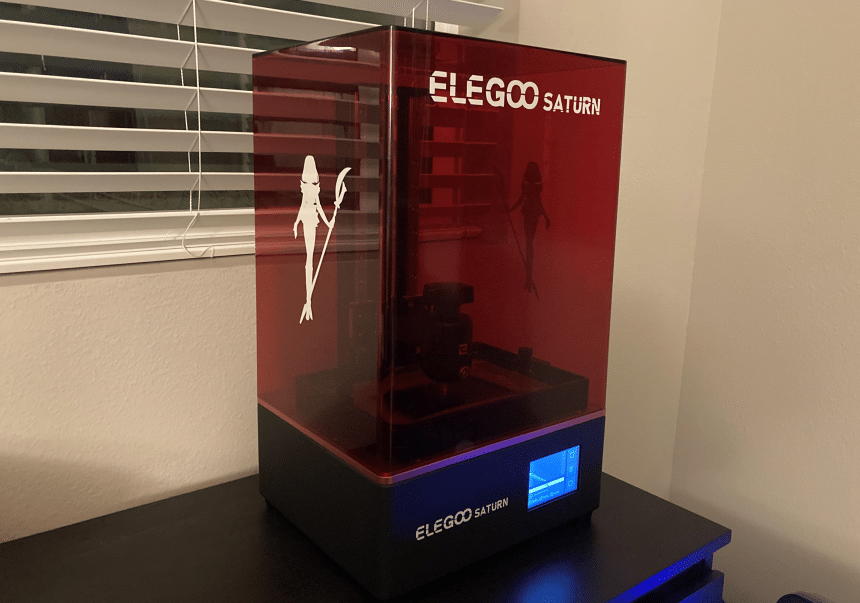
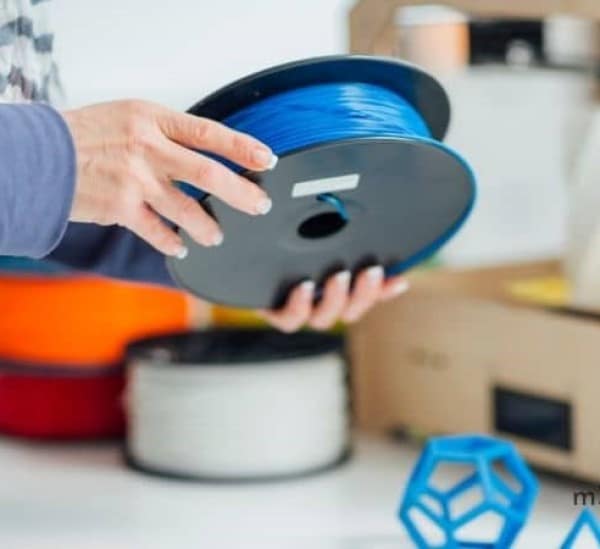
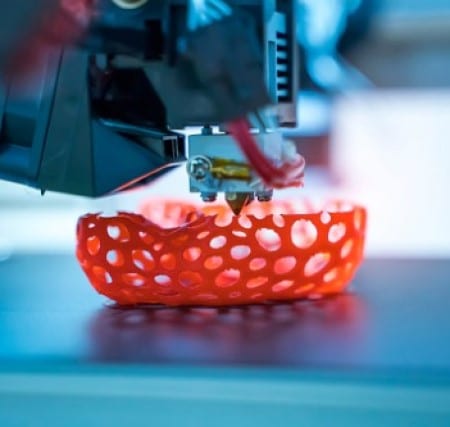
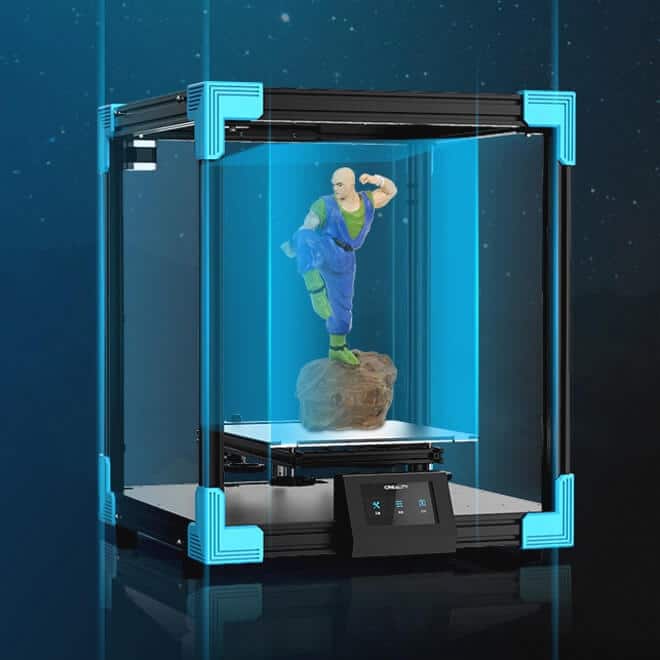
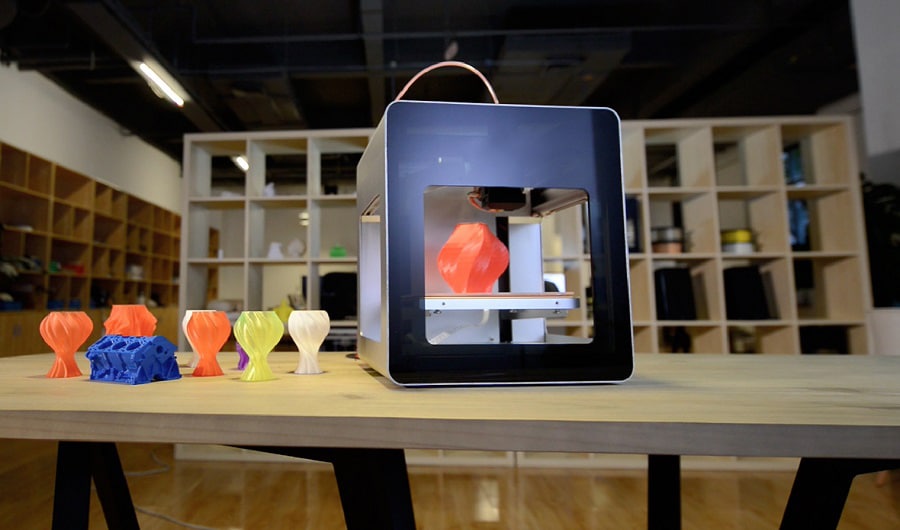
I want to buy a 3D printer. I use a Ultimarker 3 at my school and the support PVA printing has been a lot of help. I had thought that having the option to print with water soluble material (support) would be really important for 3D printer buyers. But upon looking at what the top models are, I found that most of them only use a single extruder. I could get the Flashforge Creator Pro for 600 euros. As well, many people are suggesting the Prusa I3 M3. So I’m still not clear if dual extruder would be more useful than it actually is… Which of the two printers do you think I should look into?
Dual extruders are a great feature in quality integrated 3D printers, especially if they perform well and make it easier to manage the idle nozzle. A drybox and enclosed filament path also keep your filament from getting wet and thus ensure a higher print quality. If you only have two nozzles that the extruder carriage moves between, then dual extrusion will be tricky. You can do breakaway supports (like using PLA or Scaffold filament to support PETG) but PVA isn’t practical without having a dry bed for it.” Good slicer tuning can allow you to do breakaway supports, so if you know that it’s something that you need then go ahead and get a printer with dual extruders.
Personally, I don’t think dual extruders are necessary – it’s a costly investment that doesn’t deliver any tangible benefits – but if you want them, then be my guest.
anyone have any experience with flash forge 3D printers? are they really worth it?
I have experience with the Ultimaker S3 and I’d say it’s one of the best dual extruder printers that you can buy. I’ve had no problems with it and can confidently recommend that you buy one.
i had an early FlashForge printer. it was made of wood and was built really well. lasted for a long time. i didnt actually use the dual extrusion capability. printing in two colors wasn’t worth the effort of leveling two nozzles perfectly. i eventually removed one extruder and used it as spare parts
do all the flashforge creators, x, pro and dreamer have heated build plates? Thank you
Yes, they do have heated build plates.
According to the specs of the 3 different models available, the pro does not have a heated build plate. The creator and dreamer both have heated build plates.